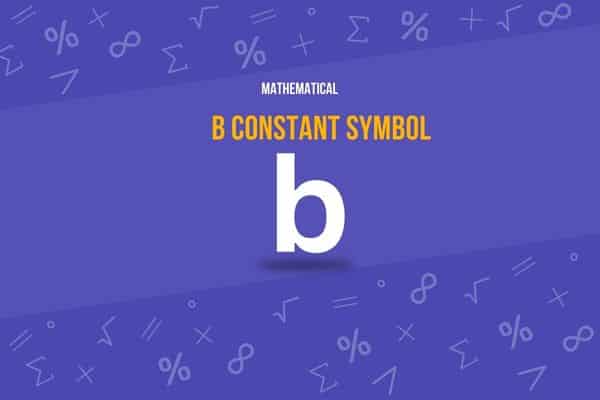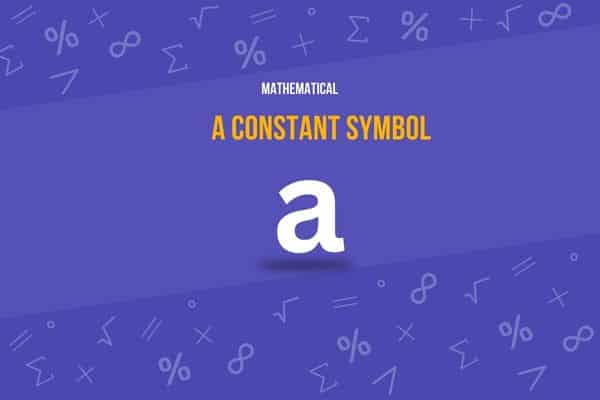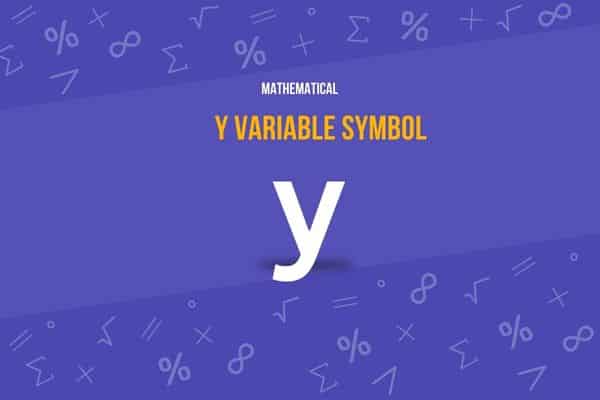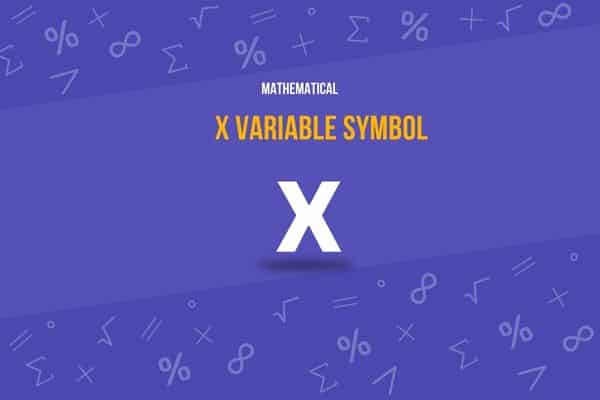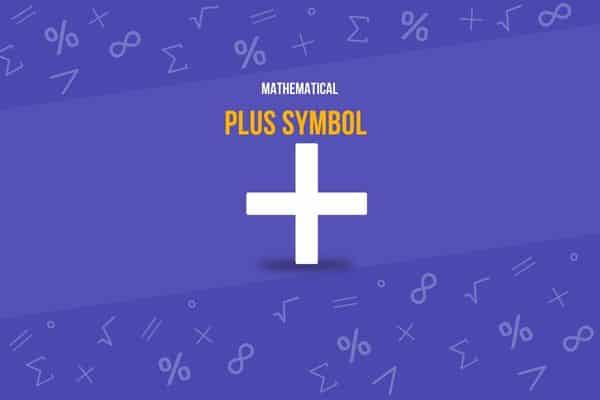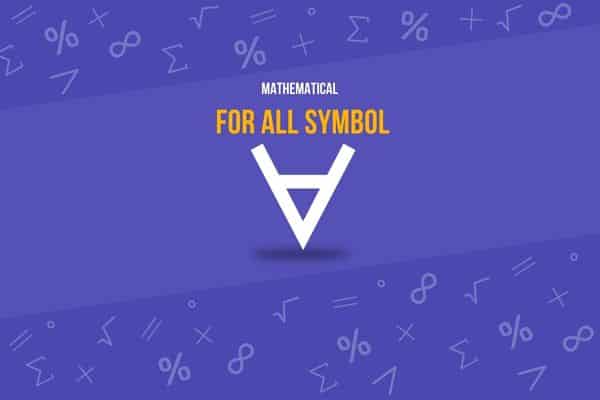What is the Intersection Symbol?
So, you’ve found yourself curious about the mysterious Intersection symbol?
We’ve all seen that curious upside-down ‘U’ in set theory and other mathematical contexts. It might look daunting, but don’t worry – we’re here to guide you through its various uses and meanings.
You’ll discover that this powerful symbol can help you better understand and express complex mathematical relationships.
Let’s get started!
Fast Facts
∩
Intersection Symbol
Intersection Symbol (∩) Overview
Here’s a detailed table outlining the key attributes of the Intersection Symbol (∩):
| Attribute | Details |
|---|---|
| Symbol Name | Intersection Symbol |
| Unicode | U+2229 |
| Image | ∩ |
| Brief Description | Used to denote the intersection of two sets, representing all elements common to both sets. |
| Unicode Version and Date | Unicode 1.1.0, released in June 1993 |
| Unicode Block Name | Mathematical Operators |
| Plane | Basic Multilingual Plane (BMP) |
| Script | Common |
| Category | Symbol, Math |
| Bidirectional Class | Other Neutral (ON) |
| Combining Class | 0 |
| Character is Mirrored | No |
| HTML Entity | ∩ or ∩ |
| CSS | \2229 |
| UTF-8 Encoding | E2 88 A9 |
| UTF-16 Encoding | 2229 |
| UTF-32 Encoding | 00002229 |
Here’s What You Will Find

Intersection Symbol
The Intersection symbol, denoted as ‘∩’, is a fundamental concept in set theory. When we talk about sets, we refer to collections of distinct objects or elements.
The Intersection symbol is used when we are dealing with two or more sets and want to identify their common elements. In simpler terms, ‘∩’ represents the shared elements between different sets.
Other Names
While mostly known by this name, the Intersection symbol’ carries other monikers within mathematics. In the context of set theory, it’s also called the “Meet” operator. This name comes from lattice theory, a branch of abstract algebra, where the term “meet” signifies the greatest lower bound of two elements. When you think about it, this name makes a lot of sense. After all, where do the elements of two sets ‘meet’?
Right in their intersection!
Some mathematicians may also call it the “AND” operator in the field of Boolean algebra, highlighting its role in logical conjunction. Whether you call it the Intersection, Meet, or AND operator, the function remains the same: it’s all about finding commonalities between sets.
Intersection Symbol Meaning
The intersection symbol (∩) is a mathematical symbol used in set theory to denote the intersection of two sets, representing all the elements common to both sets.
For example, if Set A = {1, 2, 3} and Set B = {2, 3, 4}, then A ∩ B = {2, 3}, highlighting the elements shared by both sets.
The symbol’s utility extends beyond just set theory, however. The Boolean algebra used in computer science and electrical engineering serves as the ‘AND’ operator, signifying the conjunction of two logical statements. Understanding the Intersection symbol is essential, allowing us to dissect complex relationships and interactions within mathematical systems.
Symbolism of the Intersection Symbol
The intersection symbol (∩) is rich with symbolism in both mathematical and broader philosophical or cultural contexts. As a fundamental component of set theory, it visually and conceptually represents the commonalities between different sets, ideas, or groups, emphasizing the significance of shared attributes or elements.
Representation of Commonality and Connection
At its core, the intersection symbol (∩) embodies the idea of connection and commonality. It identifies and highlights what various groups, concepts, or sets share, underscoring the importance of unity and the shared foundation that underlies different entities. This aspect of the symbol can be seen as a metaphor for finding common ground in diverse situations, whether in academic discourse, social interactions, or collaborative environments.
Symbolic in Collaborative and Interdisciplinary Approaches
The intersection symbol also symbolizes the essence of interdisciplinary research and collaborative efforts. It encourages integrating diverse perspectives and expertise, illustrating how combining different fields or ideas can lead to a richer, more comprehensive understanding. In this sense, ∩ it denotes a mathematical operation and advocates for synthesizing knowledge across disciplines.
Philosophical and Ethical Implications
Philosophically, the intersection symbol can represent the overlap of ethical, cultural, and personal values. It invites reflection on how individuals and societies can find common values and goals despite differences. This symbolic usage resonates particularly in discussions about social justice, community building, and ethical decision-making, where recognizing shared human experiences and rights is crucial.
Visual and Conceptual Simplicity
The intersection symbol’s visual simplicity belies its deep conceptual implications, making it a powerful tool for conveying the essence of interconnectedness and shared characteristics concisely and clearly. This simplicity and effectiveness make it an enduring symbol in mathematical notation and beyond, where it continues to facilitate understanding and emphasize the universal human capacity for finding commonality.
The intersection symbol (∩) transcends its mathematical origins, offering rich symbolic meanings associated with connection, collaboration, and the pursuit of shared understanding in various contexts.
Intersection Symbol Unicode
Unicode is a global standard for encoding, representing, and handling text data across many languages and writing systems. It’s a comprehensive system that aims to provide a unique numerical identifier – or ‘code point’ – for every character, regardless of platform, program, or language. These code points are typically expressed in hexadecimal (base 16) format. This universal system enables compatibility and consistent text representation across digital platforms and services.
The intersection symbol’s Unicode is U+2229. In this designation, ‘U+’ signifies that it’s a Unicode character, and ‘2229’ is the hexadecimal number corresponding to the Intersection symbol in the Unicode standard.
With this Unicode, you can consistently represent the Intersection symbol across various platforms and applications, ensuring that mathematical expressions are universally understood.
Intersection Symbol Uses
The Intersection symbol, ‘∩, ‘is vital in many mathematical and logical applications. Primarily, it’s a cornerstone of set theory, a branch of mathematical logic that studies sets, which are abstract collections of objects. The Intersection symbol represents the common elements between two or more sets, defining a new set composed of these shared elements.
The intersection symbol (∩) is widely used in mathematics, particularly in set theory, to denote the common elements between two or more sets. Its applications, however, extend beyond pure mathematics into various fields requiring logical and set-based reasoning. Here are some primary uses of the intersection symbol:
Set Theory
- Basic Operations: In set theory, the intersection operation is one of the basic operations. For example, if Set A = {1, 2, 3} and Set B = {2, 3, 4}, A ∩ B results in {2, 3}, which are the elements common to both sets.
- Proving Properties: Intersection is used to prove various properties of sets, such as associativity, commutativity, and distributivity of intersection over union.
Probability Theory
- Event Analysis: In probability, the intersection of events represents the occurrence of all included events simultaneously. For instance, if Event A is “rolling a 5 on a die” and Event B is “rolling an odd number,” then A ∩ B represents the probability of both events happening simultaneously, which, in this simplified case, is just the event A.
- Complex Probability Problems: Intersection helps solve more complex problems, including those involving conditional probabilities and independent events.
Statistics
- Data Analysis: Intersection is used in statistics to identify common traits or characteristics between different data sets, helping in comparative studies and correlation analysis.
Computer Science
- Database Queries: In databases, the intersection can be used to find common data points between different datasets or tables. For example, finding common customers between two different sales databases.
- Algorithm Design: In algorithm design, intersections are often used in problems involving graphs, such as finding common nodes or paths between different graphs.
Logic
- Logical Conjunctions: In logic, intersection corresponds to the logical AND operation. It is used in formulating and solving logical statements where multiple conditions must be satisfied simultaneously.
Engineering
- Systems Analysis: Engineers may use intersections to determine common factors affecting multiple systems within a project, optimizing the integration and function of different system components.
Linguistics
- Semantic Analysis: In linguistics, intersectionality can be used in semantic analysis where characteristics of language and dialects intersect, providing insights into the commonalities among different languages or dialect groups.
Legal Studies
- Case Analysis: Intersectionality is a concept in legal studies that helps analyze cases involving multiple statutes or regulations that may overlap or interact in complex ways.
The intersection symbol (∩) serves as a powerful tool across these disciplines, facilitating the analysis of shared properties, behaviors, or characteristics in a structured and quantifiable manner.
Furthermore, this symbol extends its reach to other mathematics and computer science areas. In probability theory, for example, it helps define the intersection of events, a concept essential in calculating joint probabilities.
The Intersection symbol signifies the common elements in collections or data sets in computer science, particularly in data structures and database querying.
Intersection Symbol Examples
The intersection symbol (∩) is used in various contexts to denote the common elements between two or more sets. Here are some practical examples that illustrate how this symbol is applied in different fields and scenarios:
Mathematics
- Example in Set Theory: Suppose Set A = {1, 2, 3, 4} and Set B = {3, 4, 5, 6}. Then A ∩ B = {3, 4}, which indicates the common elements between Set A and Set B.
Probability Theory
- Event Intersection: If Event A represents “drawing a red card from a deck” and Event B represents “drawing a face card from a deck,” then A ∩ B represents the event of “drawing a red face card.”
Computer Science
- Database Management: In SQL, the
INTERSECTkeyword can be used to return the common records found in two different SQL queries. For example, for two queries, selecting customer IDs from different tables or conditions will use INTERSECT to find customers that are common to both queries.
Logic and Philosophy
- Logical Arguments: In formal logic, if Proposition A is “All humans are mortal” and Proposition B is “Socrates is human,” then A ∩ B helps in deriving that “Socrates is mortal” through the intersection of the general rule and the specific instance.
Biology
- Species Distribution: Biologists might use intersections to identify regions where two species habitats overlap. For example, if Set A represents the geographical range of one species and Set B represents that of another, A ∩ B would show their overlapping habitat.
Engineering
- System Analysis: When assessing parts’ compatibility in mechanical engineering, the intersection of sets representing different system specifications might be examined to identify compatible components.
Economics
- Market Analysis: Economists may use intersections to find common traits or behaviors between market segments. For instance, if Set A represents consumers interested in eco-friendly products and Set B represents consumers interested in premium products, A ∩ B identifies the niche market for premium eco-friendly products.
Education
- Curriculum Design: Educators might find intersections in content requirements across different subjects to create interdisciplinary lessons that meet multiple curriculum goals simultaneously.
Linguistics
- Linguistic Features: Linguists could use intersections to study common features among language families or dialects, identifying fundamental linguistic structures that cross cultural boundaries.
These examples demonstrate the versatility of the intersection symbol (∩) in facilitating analysis, research, decision-making, and reasoning across a wide range of disciplines, highlighting its importance in both theoretical and practical applications.
Here’s an example that should help illustrate using the Intersection symbol.
Let’s consider two sets:
Set A = {1, 2, 3, 4, 5} Set B = {4, 5, 6, 7, 8}
The intersection of sets A and B is represented as A ∩ B. This is the set that contains all elements that are in both A and B. So, for these specific sets, the intersection would be:
A ∩ B = {4, 5}
Why? Because 4 and 5 are the only elements in both Set A and Set B. All the other elements are unique to one set or the other, so they’re not included in the intersection.
Why is the Intersection Symbol Important?
For several reasons, the Intersection symbol ‘∩’ holds significant importance in mathematics and logic. Firstly, it provides a concise and universally recognized way to express the concept of shared elements between sets, a foundational aspect of set theory. This seemingly simple concept is essential in more advanced areas of mathematics, like probability theory, where the intersection of events informs calculations of joint probabilities.
The Intersection symbol isn’t just a mathematical symbol; it’s a bridge connecting various fields, fostering understanding and communication in our increasingly data-driven world.
Intersection Symbol History
The intersection symbol (∩) is integral to set theory and mathematical notation, but its origins and evolution are not as well-documented as some mathematical symbols. Here’s a concise exploration of its historical development:
Early Set Theory Concepts
The concept of an intersection in mathematics predates the symbol itself. Early mathematicians and philosophers like Aristotle and Euclid engaged with the foundational ideas of commonality between sets, though they did not use a formal symbol. In ancient and medieval mathematics, intersections were described verbally or depicted through Venn-like diagrams without a specific symbol.
Emergence in Modern Mathematics
The formal mathematical notation that includes the intersection symbol began to take shape in the 19th century when mathematics saw significant development in abstract and symbolic notation. The symbol (∩) itself was introduced as part of the development of set theory by mathematicians such as Georg Cantor and Richard Dedekind, who were pioneers in this field.
Standardization by Giuseppe Peano
The intersection symbol (∩) as we know it today was popularized and standardized by Italian mathematician Giuseppe Peano in 1888. Peano’s formal mathematical logic and set theory work included a comprehensive system of symbols for logical operations and relations, among them the symbols for union (U) and intersection (∩). His choice of symbols was part of creating a clear and systematic approach to mathematical notation.
Adoption and Use in the 20th Century
With the publication of Peano’s work and the subsequent rise of set theory as a central discipline within mathematics during the early 20th century, the intersection symbol gained widespread acceptance. It became commonly used in textbooks, academic papers, and educational materials, standardizing how intersections were expressed in set theory and related disciplines.
Unicode Inclusion
As digital typesetting and computing became dominant in the late 20th century, ensuring consistent representation of mathematical symbols across platforms became crucial. The intersection symbol was included in the Unicode Standard in the early 1990s, solidifying its place worldwide in digital and printed texts. This inclusion has allowed the symbol to be uniformly represented in digital communications, further standardizing its use.
The history of the intersection symbol (∩) reflects broader trends in the development of mathematical notation, emphasizing the move towards abstraction and formalization in mathematics. From verbal descriptions in ancient texts to a standardized symbol in modern mathematics, the intersection symbol has become a fundamental part of the mathematical vocabulary, essential for expressing one of the core operations in set theory and beyond. Its history underscores the evolution of mathematical thought and the importance of notation in the advancement of the discipline.
Intersection Symbol Origin
The symbol itself, an inverted Latin ‘U’ for ‘Universal,’ was chosen to represent the intersection of sets, the idea being that the intersection of two sets is a subset of the universal set.
Did You Know?
The term “intersection” comes from the Latin “intersectio”, meaning “a going between, a meeting,” which accurately conveys the idea of common elements that ‘meet’ in different sets.
The intersection symbol (∩) has become a cornerstone of set theory and mathematical notation, representing the common elements between sets. Its development mirrors the evolution of mathematical symbols, shifting from textual descriptions to concise graphical representations.
Early Set Theory Developments
While the concept of intersection — identifying common elements between sets or groups — has ancient roots in logic and philosophy, the specific symbol for intersection, (∩), did not appear until much later. Early discussions about sets and intersections were primarily verbal or diagrammatic, lacking a standardized symbol.
Emergence of Modern Mathematical Notation
The rise of modern mathematical notation in the 19th century, led by figures like George Boole and Augustus De Morgan, laid the groundwork for symbolic representation in algebra and logic. However, Giuseppe Peano introduced the intersection symbol in the late 19th century.
Giuseppe Peano’s Contributions
Giuseppe Peano, an Italian mathematician known for his work in mathematical logic and set theory, was instrumental in formalizing the notation used in these fields. In 1888, Peano introduced a set of symbols, including the intersection symbol (∩), in his book “Calcolo Geometrico secondo l’Ausdehnungslehre di H. Grassmann,” which was followed by his more famous work, the “Formulario Mathematico.”
Peano’s adoption of the symbol was part of his effort to provide a clear, concise, and systematic method of expression that could be universally understood in the mathematical community. His choice of the symbol (∩) was likely inspired by its visual representation of overlapping areas, effectively conveying the commonality concept.
Standardization and Widespread Use
Following Peano’s publications, the intersection symbol gained acceptance and appeared in mathematical texts across Europe and eventually worldwide. Its usage was standardized further as set theory became a fundamental part of mathematics education in the 20th century.
Unicode Inclusion
The digitization of text and the advent of computers necessitated a standardized method for representing mathematical symbols in digital formats. The intersection symbol (∩) was included in the Unicode Standard, ensuring it could be used consistently across various digital platforms. This further solidified its role in both academic and practical applications.
The origin of the intersection symbol (∩) is a testament to the evolution of mathematical notation from a cumbersome system of textual descriptions to a streamlined, symbolic language. Introduced by Giuseppe Peano and refined through widespread academic use, the symbol has become essential to conveying ideas in set theory and beyond, facilitating clear and efficient communication in mathematics and related disciplines.
Evolution of the Intersection Symbol
Over time, this symbol has remained relatively unchanged, retaining its form and purpose from Venn’s early diagrams. Its use has expanded into various mathematical domains, underlining its enduring importance in expressing fundamental mathematical relationships.
Intersection Symbol In Everyday Life
The Intersection symbol in mathematics represents a space where two sets meet, embodying the concept of commonality and convergence. In personal reflection, this symbol calls to mind the idea of mutual understanding and shared interests, where diverse thoughts, cultures, and experiences intersect.
On a day-to-day basis, embracing the principles of the Intersection symbol could mean actively seeking out common ground in conversations, fostering empathy, and promoting inclusivity.
For instance, amid a disagreement, one might try to identify shared beliefs or goals that could help bridge the gap. This could also extend to purposely broadening one’s horizons to invite more intersections of ideas and experiences. This approach in daily life might lead to more productive and harmonious relationships and a richer understanding of the world in its diverse intricacy.
Last Thoughts
The Intersection symbol, ‘∩’, might seem far removed from daily life, particularly for those not regularly engaged in mathematical work. However, its fundamental principles—commonality, connection, overlap—resonate deeply and can be applied outside the mathematical context. Take, for example, how you manage your daily routines and tasks. Suppose you’re balancing multiple roles or projects, each with its own set of tasks.
By identifying the intersection—the tasks that overlap among your roles—you can increase efficiency, tackle these shared tasks in a batch, and free up time and energy for other responsibilities.
Ultimately, the Intersection symbol reminds us that we live in an interconnected world, encouraging us to seek and celebrate commonalities while honoring and learning from our differences.
Before You Go
Now that you’ve understood the Intersection symbol don’t stop here! There are many more fascinating mathematical symbols, each with its unique story and application. So, continue your exploration—you might be surprised by what you discover next!
If you found this exploration of the intersection symbol (∩) intriguing, why not share it with others who might appreciate the rich history and significance of mathematical symbols?
Whether they are fellow students, educators, or simply enthusiasts of mathematics and its language, passing along this article can spark enriching discussions and deepen understanding.
Share this on your social media, academic forums, or during your next study session, and keep the fascinating conversation about mathematical symbols going!

